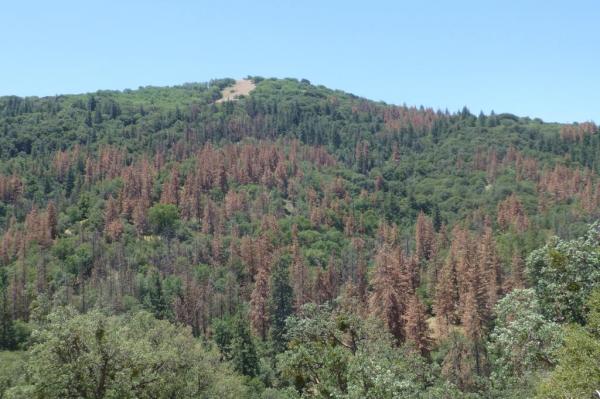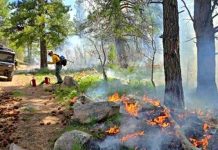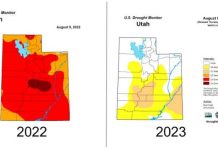
ARLINGTON, Va., Feb. 23 (UPI) — While the California drought has been a topic of discussion nationally for some time, researchers are now saying the effects of climate change — and specifically, drought — could put forests across the United States in danger.
Scientists at Duke University suggest ways to predict the pace and extent of the effects of future droughts in forests across the country, looking at them by region to find the best mitigation practices.
In the West, there are already drought-induced deaths of whole communities of trees, known as stands, as well as wildfires.
The new approach can help as officials struggle to move from small, localized problems to tracking overall ecological ones. Worrying about overall effects, the researchers say, could help scientists protect tree populations that may not be able survive drought — be it stand-wide or species-wide.
“Prolonged drought affects wildfire risks, species distribution, forest biodiversity and productivity, and virtually all goods and services provided by forests, so there is a pressing need to know what is happening now, what might happen in the future, and how we can manage for these changes,” James Clark, an environmental scientist at Duke University, said in a press release.
For the study, published in the journal Global Change Biology, the researchers gathered information on western droughts — diebacks, changes in composition and structure, insects, and fires — and sought methods to predict how climate change will affect eastern forests.
The researchers recommend reducing stand density, selecting drought-tolerant species and genotypes for artificial regeneration of forests, and the development of multistructured stands designed to carefully fit locales.
Further research on how climate is changing in the continental United States and how it may exacerbate droughts also is recommended in the study.
“Most forest research is carried out at local study sites, where trees are individually catalogued and measured,” said Henry Gholz, a program director in the Division of Environmental Biology at the National Science Foundation. “This approach risks ‘missing the forest for the trees.'”





